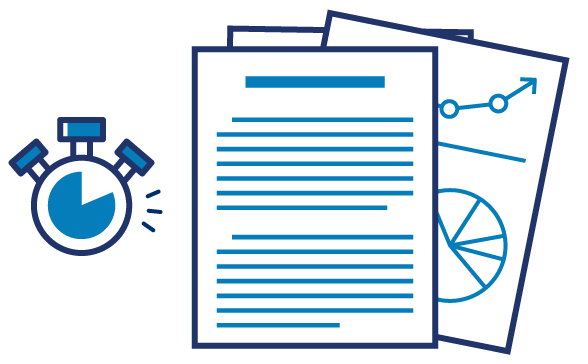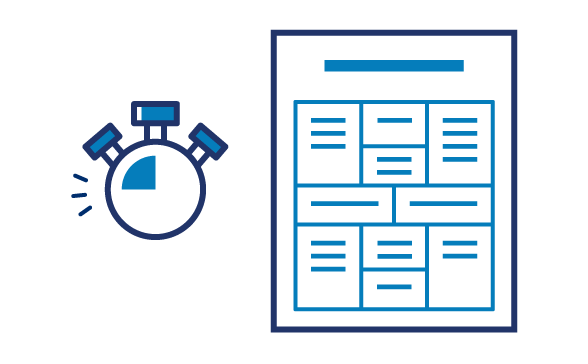Write your business plan

Your business plan is the foundation of your business. Learn how to write a business plan quickly and efficiently with a business plan template.
Business plans help you run your business
A good business plan guides you through each stage of starting and managing your business. You’ll use your business plan as a roadmap for how to structure, run, and grow your new business. It’s a way to think through the key elements of your business.
Business plans can help you get funding or bring on new business partners. Investors want to feel confident they’ll see a return on their investment. Your business plan is the tool you’ll use to convince people that working with you — or investing in your company — is a smart choice.
Pick a business plan format that works for you
There’s no right or wrong way to write a business plan. What’s important is that your plan meets your needs.
Most business plans fall into one of two common categories: traditional or lean startup.
Traditional business plans are more common, use a standard structure, and encourage you to go into detail in each section. They tend to require more work upfront and can be dozens of pages long.
Lean startup business plans are less common but still use a standard structure. They focus on summarizing only the most important points of the key elements of your plan. They can take as little as one hour to make and are typically only one page.

Traditional business plan
This type of plan is very detailed, takes more time to write, and is comprehensive. Lenders and investors commonly request this plan.

Lean startup plan
This type of plan is high-level focus, fast to write, and contains key elements only. Some lenders and investors may ask for more information.
Traditional business plan format
You might prefer a traditional business plan format if you’re very detail-oriented, want a comprehensive plan, or plan to request financing from traditional sources.
When you write your business plan, you don’t have to stick to the exact business plan outline. Instead, use the sections that make the most sense for your business and your needs. Traditional business plans use some combination of these nine sections.
Executive summary
Briefly tell your reader what your company is and why it will be successful. Include your mission statement, your product or service, and basic information about your company’s leadership team, employees, and location. You should also include financial information and high-level growth plans if you plan to ask for financing.
Company description
Use your company description to provide detailed information about your company. Go into detail about the problems your business solves. Be specific, and list out the consumers, organization, or businesses your company plans to serve.
Explain the competitive advantages that will make your business a success. Are there experts on your team? Have you found the perfect location for your store? Your company description is the place to boast about your strengths.
Market analysis
You’ll need a good understanding of your industry outlook and target market. Competitive research will show you what other businesses are doing and what their strengths are. In your market research, look for trends and themes. What do successful competitors do? Why does it work? Can you do it better? Now’s the time to answer these questions.
Organization and management
Tell your reader how your company will be structured and who will run it.
Describe the legal structure of your business. State whether you have or intend to incorporate your business as a C or an S corporation, form a general or limited partnership, or if you’re a sole proprietor or limited liability company (LLC).
Use an organizational chart to lay out who’s in charge of what in your company. Show how each person’s unique experience will contribute to the success of your venture. Consider including resumes and CVs of key members of your team.
Service or product line
Describe what you sell or what service you offer. Explain how it benefits your customers and what the product lifecycle looks like. Share your plans for intellectual property, like copyright or patent filings. If you’re doing research and development for your service or product, explain it in detail.
Marketing and sales
There’s no single way to approach a marketing strategy. Your strategy should evolve and change to fit your unique needs.
Your goal in this section is to describe how you’ll attract and retain customers. You’ll also describe how a sale will actually happen. You’ll refer to this section later when you make financial projections, so make sure to thoroughly describe your complete marketing and sales strategies.
Funding request
If you’re asking for funding, this is where you’ll outline your funding requirements. Your goal is to clearly explain how much funding you’ll need over the next five years and what you’ll use it for.
Specify whether you want debt or equity, the terms you’d like applied, and the length of time your request will cover. Give a detailed description of how you’ll use your funds. Specify if you need funds to buy equipment or materials, pay salaries, or cover specific bills until revenue increases. Always include a description of your future strategic financial plans, like paying off debt or selling your business.
Financial projections
Supplement your funding request with financial projections. Your goal is to convince the reader that your business is stable and will be a financial success.
If your business is already established, include income statements, balance sheets, and cash flow statements for the last three to five years. If you have other collateral you could put against a loan, make sure to list it now.
Provide a prospective financial outlook for the next five years. Include forecasted income statements, balance sheets, cash flow statements, and capital expenditure budgets. For the first year, be even more specific and use quarterly — or even monthly — projections. Make sure to clearly explain your projections, and match them to your funding requests.
This is a great place to use graphs and charts to tell the financial story of your business.
Appendix
Use your appendix to provide supporting documents or other materials were specially requested. Common items to include are credit histories, resumes, product pictures, letters of reference, licenses, permits, patents, legal documents, and other contracts.
Example traditional business plans
Before you write your business plan, read the following example business plans written by fictional business owners. Rebecca owns a consulting firm, and Andrew owns a toy company.
